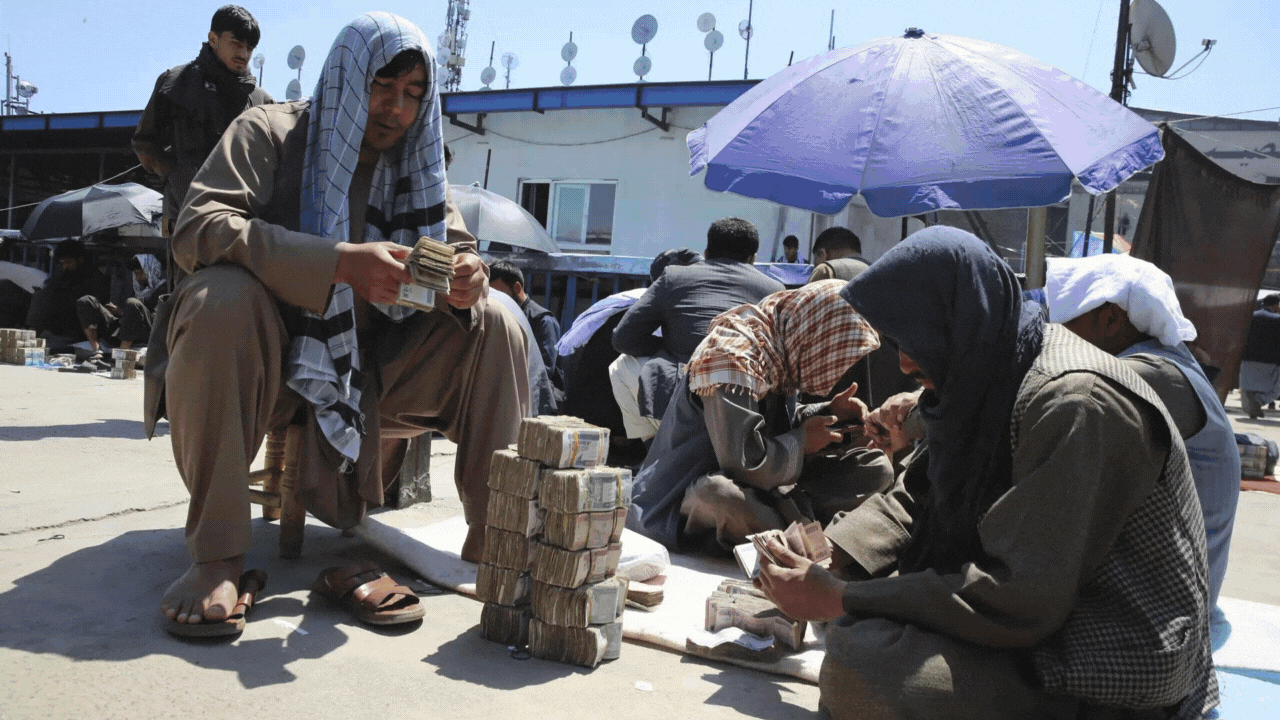In Afghanistan, the economic landscape has drastically shifted since the Taliban’s takeover in 2021. The nation, once buoyed by international aid and foreign investment, now reels under severe financial distress. The freezing of billions in assets and the cessation of most foreign aid have plunged the country into an economic crisis.Afghanistan’s financial woes deepen as foreign support dwindles. The takeover by the Taliban has led to a significant retraction of international financial support, exacerbating an already precarious situation. The economy, heavily reliant on aid, faces a dire future with limited immediate prospects for recovery.A tale of unexpected prosperityYet, amidst this backdrop of hardship, certain sectors and individuals find ways to not only survive but thrive, highlighting a complex interplay of resilience and disparity.Yunis Safi, a businessman in Kabul, understands the subtle power of appearances in Afghanistan’s social and economic spheres. Running a phone shop in the upscale Shar-e-Naw neighborhood, Safi explains, “In Afghanistan, your phone is your personality.” His store, guarded and stocked with high-end iPhones, serves as a stark contrast to the economic conditions outside its doors.What they are saying: Safi’s customers include not just affluent Afghans but also members of the Taliban, indicating a nuanced shift in the group’s stance towards technology and commerce. “Of course they need smartphones. They use social media, they like making videos,” Safi told AP, pointing out the demand for advanced features and security in mobile devices among his clientele.Zoom inOn the streets of Kabul, another facet of the economy thrives in the bustling money exchange market. Here, Abdul Rahman Zirak estimates that “$10 million changes hands daily,” with remittances from the Afghan diaspora playing a critical role. This sector’s vibrancy during economic turmoil underscores the crucial role of informal financial systems in sustaining livelihoods when formal banking sectors collapse.The bigger pictureBeyond individual success stories like Safi’s, the overall economic narrative of Afghanistan is one of a country at a crossroads. The telecommunications sector’s growth, highlighted by significant investments in network infrastructure, presents a glimmer of hope. According to the communications ministry, 2 million new SIM cards have been issued in the past two years, and subscriber numbers are growing. The government is investing $100 million in the telecom sector and has fully restored hundreds of towers. Out of the 22.7 million active SIM cards in the country of 41 million people, 10 million are for voice calls, and the rest are for mobile internet. The communications ministry’s push to expand digital connectivity across the country suggests a strategic pivot towards modernizing even in times of political and social upheaval, an AP report said.The Taliban has also entered into preliminary agreements with Kazakhstan and Turkmenistan to establish a logistics hub in western Afghanistan, aiming to position the country as a pivotal route for regional exports, including Russian oil to South Asia, according to Afghanistan’s commerce minister. Taliban acting commerce minister Nooruddin Azizi, speaking to Reuters after a tripartite meeting in Kabul last week, announced that technical teams would finalize a written plan for the hub within two months, with investment from all three nations expected six months after discussions.The proposed hub in Herat province is intended to leverage Afghanistan’s geographical advantage as a historical crossroads of the Silk Road, strategically nestled between South and Central Asia and neighboring China and Iran. Azizi emphasized the significance of this initiative, noting, “Based on our discussions, a logistics centre is going to be established in Herat province, which can connect the north to South Asia.”From spring offensive to charm offensiveIn Kabul, about 30 men, including a model and a 17-year-old with no prior job experience, form the inaugural class at a Taliban-run institute designed to foster a cadre of tourism and hospitality professionals. This initiative is part of a broader charm offensive by the Taliban to reshape perceptions of Afghanistan, despite stringent educational and societal restrictions on women. Mohammad Saeed, the head of Kabul’s Tourism Directorate, notes a modest uptick in foreign visitors, buoyed by a more peaceful environment and improved flight connections with international hubs like Dubai. Despite this progress, the tourism sector grapples with formidable challenges such as onerous visa processes, severed international diplomatic relations, and a lack of robust infrastructure.Amidst these efforts, Afghanistan is positioning itself as an emerging tourism destination, a vision supported by the Taliban’s leadership, as expressed by Saeed. The students at the institute are optimistic about their futures, with aspirations like Ahmed Massoud Talash’s aim to enhance his social media presence through scenic Instagram posts, and Samir Ahmadzai’s ambition to enter the hospitality business. The curriculum includes traditional Afghan handicrafts and basic anthropology, with an informal focus on understanding cultural interactions with foreign tourists—especially women, given the strict local customs. The reopening of the women’s spa at Kabul’s Serena Hotel exclusively for foreign women after a prolonged shutdown signals a tentative readiness for more international guests. However, the pervasive restrictions on Afghan women and complex global perceptions continue to pose significant hurdles to Afghanistan’s tourism ambitions.Between the linesThe survival and success of businesses like Safi’s and the bustling exchange markets provide critical insights into Afghanistan’s adaptive economic strategies. These stories of resilience and adaptation are pivotal in understanding how Afghans navigate their new realities under the Taliban’s rule, leveraging every available opportunity to forge stability in an unstable environment.What next: Monitoring how Afghanistan’s economy adapts to the current challenges will be crucial. The resilience of sectors like telecommunications and informal finance may dictate the pace and nature of economic recovery or further decline. How the Taliban supports or stifles these growth areas could significantly impact the nation’s economic trajectory and its people’s everyday lives.(With inputs from agencies)end of article
Subscribe to Updates
Get the latest creative news from FooBar about art, design and business.


